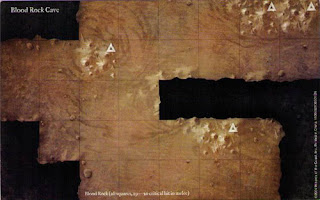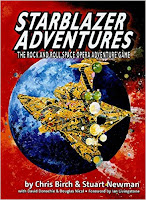In this part I zoom out even further and take a look at planetary system maps and star maps. Which conventionally use the hex grid I looked at in
Part 3: Region Maps.
 |
| Regina Subsector Jump Map |
STARMAPS
The definitive starmap has to be a Traveller sector map, which has some particular conventions of its own, namely the positioning of features around the edges of each hex to denote the hexes contents (clockwise from top; Starport Type, Gas Giant, Allegiance, World Name, and Base Type.) Stellar trade routes which are also the main lines of communication are denoted by solid lines from one planet to anotherand the hex center contains world information (water present / not present or if it has an asteroid belt). The sample I'm using is the Regina Subsector Jump Map and the standard 1½ hour rule applies.
Hexographer (
http://www.hexographer.com)
 |
| Hexographer "Cosmic" output |
If you've read Part 3: Region Maps, you'll know I rate this highly as an easy to use tool with great output. "The Daddy" of free online hexmapping solutions has its own "Cosmic" menu which offers features such as planets, stars, and spacestations which can each have custom colours. Hex features can also be placed at various clock positions around the hex, but these are not entirely traveller compliant and are time consuming to include and to be honest if you're running anything other than traveller you won't need them.
7/10 - "Not too Shabby"
The Traveller Map (
http://www.travellermap.com)
An awesome bit of interactive mapping which shows the full stellar map divided into it's individual sub-sectors. Double clicking on the sectors zooms in and you can even print off the results in booklet form. If you're GMing a game in the Traveller universe then this should be your first starport of call.
9/10 - "Why DIY when it's already done for you?"
PLANETARY MAPS
The inherent problem of mapping a globe onto a flat plane has plagued cartographers ever since our view of the world changed from being flat to round and has resulted in a number of
map projection techniques of which we are most familiar with the Mercator Projection. However, Sci-Fi roleplayers will be most familiar with the icosahedral projection popularised by Traveller.
Icosahedral World Generator (
http://inkwellideas.com/2011/09/isocahedral-worldmap-generator/)
Joe over at Inkwell Ideas has pulled off an amazing planet generator which should keep most DMs more than happy. Not only does the tool allow you to customise the random size, temperature and percentage of land, mountains and vegetation, it also includes a hex editor allowing you to replace terrain as you like. There's no export to image function but you can export to hexographer for even more editing possibilities.
 |
| Inkwell Ideas Icosahedral World Generator |
Other Notable Tools
Donjon's Sci-Fi World Generator (
http://donjon.bin.sh/scifi/world/)
This browser based tool will happily generate planets for you all day long. You can customise the generator a little to make each planet a bit more useable, the output includes a map, physics (size and physical composition), gravimetry (gravity and esape velocity), rotation (length of 1 rotation and axial tilt), hydrosphere (ratio of water/ice), atmosphere (chemical composition), climate (temerature ranges) and biosphere (chemistry and lifeforms). If you want to create a whole star system Donjon also has a
Traveller System Generator and a
Star Wars D6 System Generator. There are a lot of really useful tools on his tsite I particularly like the Sci-Fi Name Generator's
Star Trek Technobabble option.
9/10 - "Superb"
Other Posts in this Series:


















































